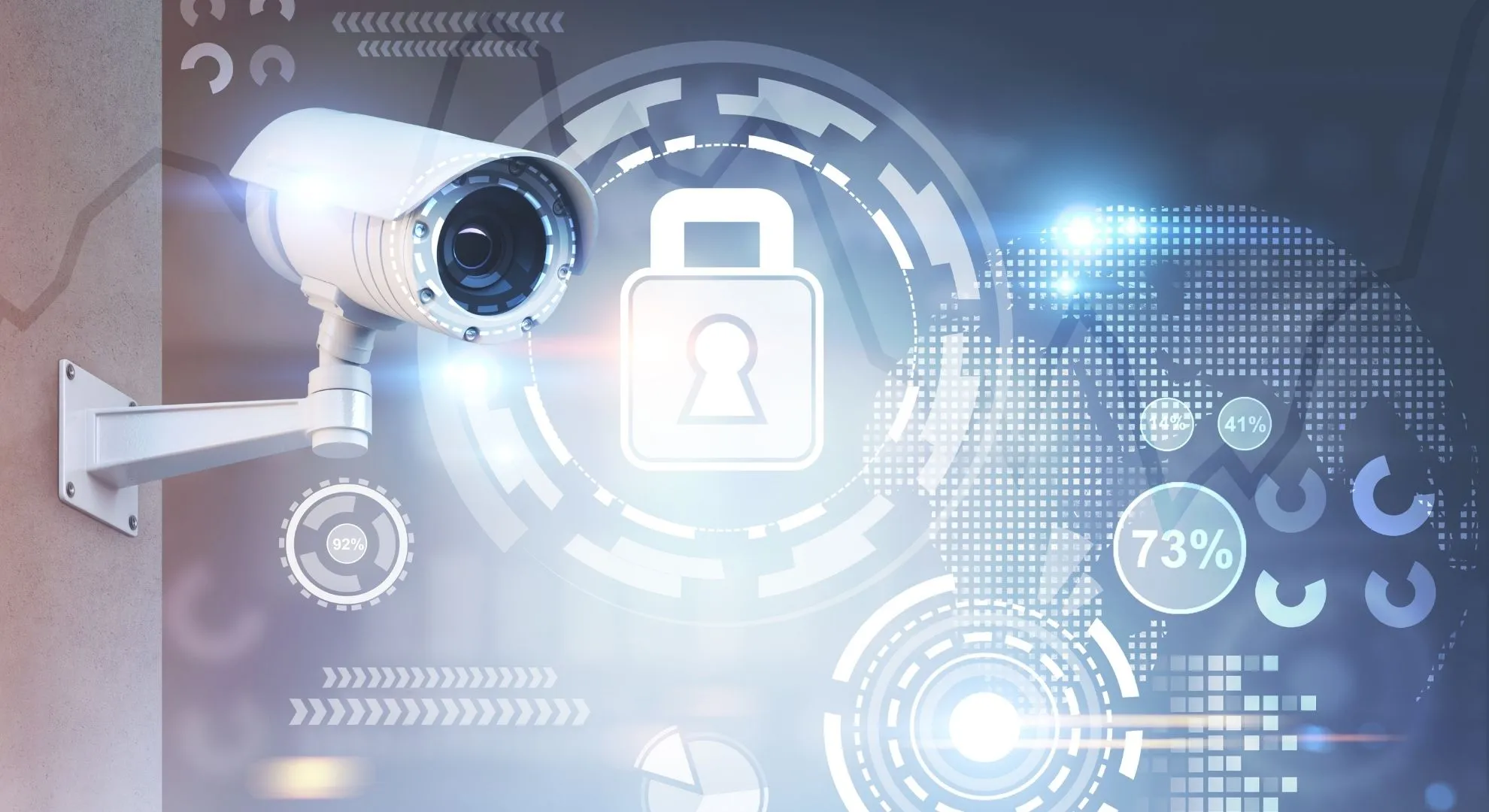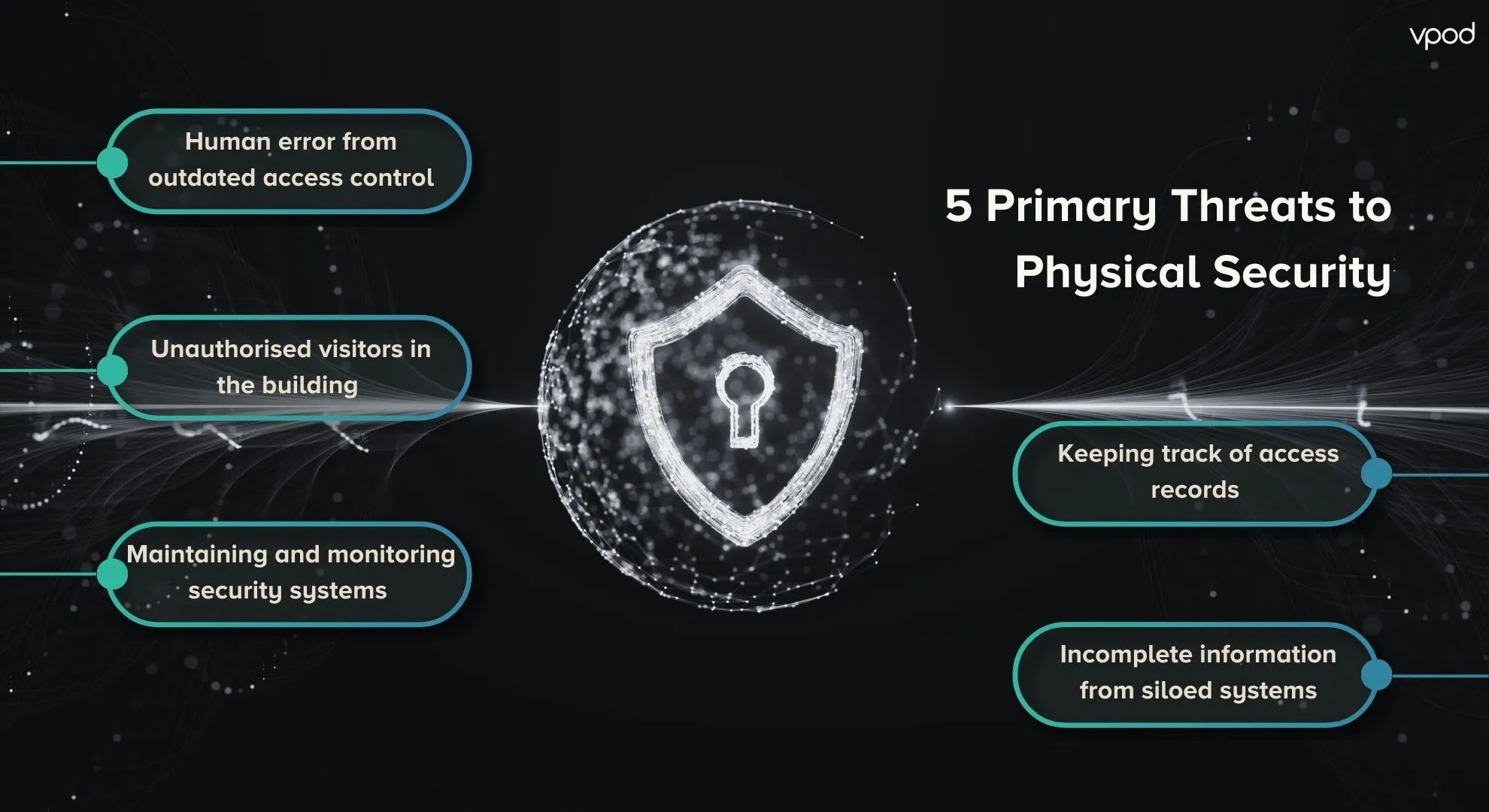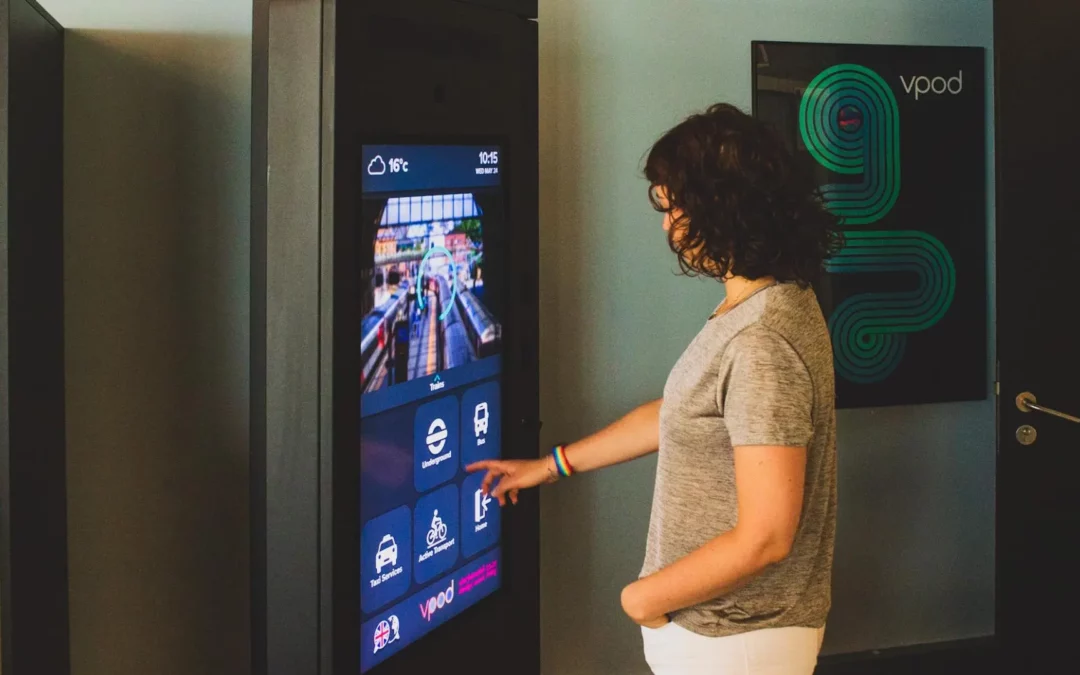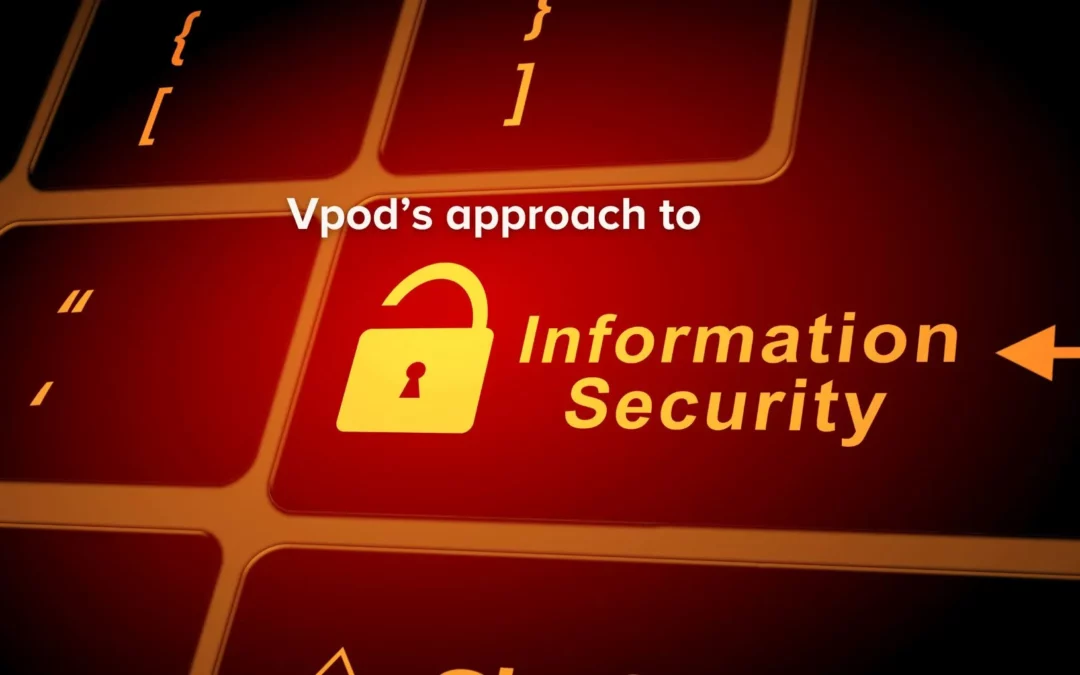Providing a positive Workplace Experience has become increasingly important as companies hope to retain talent and get workers back into the office. The employee experience and physical safety measures go together in this case, but physical security automation is rarely the main focus of these efforts. Security should be a top priority for any self-respecting organisation, and the positive impact of simplifying security processes can extend far beyond just the security department.
In this blog post, we explain how technologies such as occupancy solutions, access control systems, and AI can enhance safety protocols, address employee concerns, and promote a positive workplace experience.
- What is Physical Security?
- The Importance of a Positive Workplace Experience
- What are the primary threats to Physical Security?
- Experience x Security: Why Physical Security Automation is the way forward?
- Summary
What is Physical Security?
Physical security is the protection of property, including all people, documents, and assets on said property. Every building needs a way to keep unwanted guests out, and most organisations will need to restrict access to certain areas at their locations. Physical workplace security often includes security guards stationed at the door, watching CCTV, and patrolling the building, but modern security systems can improve existing procedures and eliminate many common security risks.
Physical security automation systems such as access control, motion sensors, visitor management systems, and occupancy solutions are all part of the puzzle to the best physical security strategy.
The Importance of a Positive Workplace Experience
Companies need to provide a positive work environment to enable employees to perform at their best. But high employee engagement doesn’t just boost productivity, as studies show reports of lower turnover and up to 48% fewer safety incidents.
The physical environment has a large effect on the employee experience. Ensuring that employees feel that they and their possessions are safe promotes a healthy relationship at work and boosts employee satisfaction and productivity. In turn, higher employee satisfaction will help attract new talent as well. Therefore, actions should be taken to make sure that all employees feel safe at work, and one way to do this is by automating physical security.
What are the primary threats to Physical Security?
Human error from outdated access control
Manually checking access credentials wastes a lot of time on repetitive admin tasks. A manual process also carries the risk of human error and non-compliance if the system isn’t updated correctly or on time.
Unauthorised visitors in the building
No receptionist knows everyone who comes and goes at their workplace. A receptionist might not have the time or capacity to thoroughly check each person, which poses the risk of unwanted people gaining access to restricted areas.
Maintaining and monitoring security systems
Keeping up with security systems such as CCTV, sensors, and visitor management systems in larger facilities requires a lot of labour and sometimes events or incidents might be missed in the moment resulting in improper actions and major security breaches.
Keeping track of access records
Keeping track of physical documents and equipment can be tricky without a clear process. It’s important to maintain access records to uphold accountability as lost or misplaced assets can pose a great security risk and potentially threaten business operations.
Incomplete information from siloed systems
According to Deloitte, not many organisations have effective response plans in place and often take a reactive-only approach, which results in poor response time and a higher risk of serious security breaches. This is typically the case for organisations with siloed systems where daily information and risks aren’t shared properly.
Experience x Security: Why Physical Security Automation is the way forward?
By automating security protocols, businesses are taking a more efficient approach to not only enhance office security but also promote a better workplace experience.
A Twilio study from 2020 showed how the pandemic sped up the digital transformation effort of many UK companies by up to 5.3 years for some. A big part of these efforts of course focused on improving the tools to support remote work during the past years. Today, as many companies look to make a smooth return to the office, it’s vital to utilise the best tools to also optimise the physical workplace.
This is how physical security automation improves the workplace experience without compromising security:
Automating visitor tracking and access control
A visitor management system can use biometric authentication, unique QR codes or RFID cards to manage visitor access, ensuring that people have the proper access credentials at all times. The Vgreet Virtual Reception enables organisations to be two steps ahead with details on visitor statistics, which can be used for occupancy planning, resource allocation, and security analysis.
On top of that, the smooth check-in experience and features such as indoor wayfinding, host notifications, and the option to video call a virtual receptionist to provide a superior user experience.
When integrated with Vector Flow’s Physical Workforce and Identity Management platform, Vgreet’s visitor management capabilities are further enhanced. Many aspects of the visitor and employee identity lifecycle can be automated through a single/centralised interface that provides users with the best and most secure identity management experience. Vector Flow’s centralised interface provides the new science of Physical Identity & Access Management (PIAM) automation, delivering insight-rich applications for all aspects of an identity lifecycle related to the physical security domain. Designed to deliver a one-credential, one-identity solution across the enterprise, this powerful solution leverages advanced Artificial Intelligence (AI) technology to automate all identity management tasks such as on/off-boarding of an Identity into physical security infrastructure, badging and credentialing, physical access management, access audits, compliance etc.
[Learn more about our partnership here]
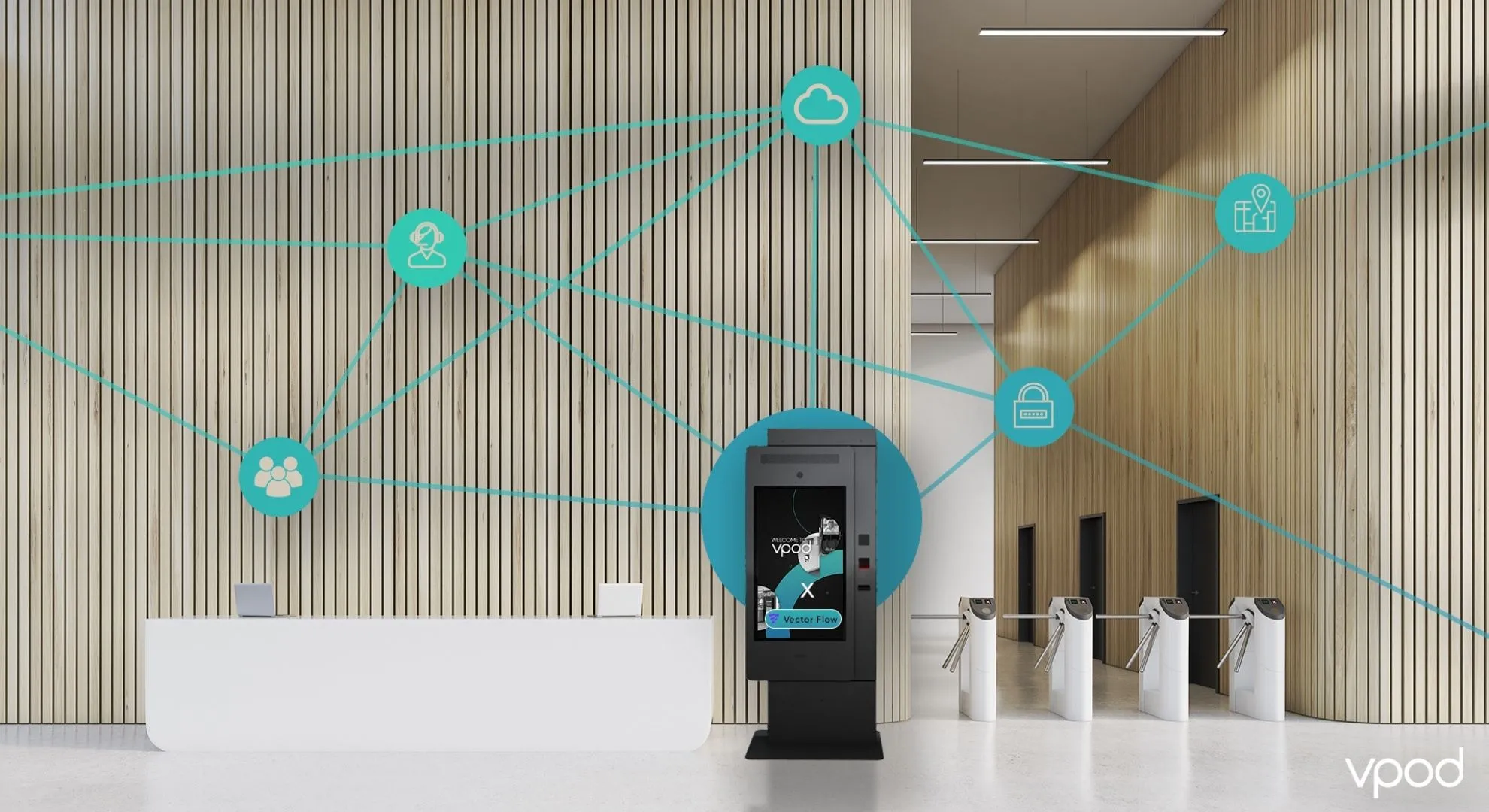
Keeping assets safe with smart storage
A smart locker system automates asset management and generates reports on daily locker usage. Admins can manage access to individual assets and monitor usage in real-time, greatly reducing the risk of loss or theft.
For improved convenience, Vflex Hybrid Smart Lockers can process multiple workflows from one locker bank for optimal space efficiency. The cloud-based software allows admins to manage lockers remotely while employees and visitors can book a locker ahead of time from their computers or through the smartphone app.
Cloud-based system
These systems are automatically updated and have a much lower risk of becoming outdated. Staying on top of the latest software updates can be very time-consuming, so automatic updates make life easier for everyone.
Integrating security solutions
Prioritising a well-connected tech ecosystem at work has great benefits for almost all aspects of the business. It provides a comprehensive picture of security data and risks that help optimise internal security protocols. E.g., the system can send out specific information and instructions to incident-affected personnel, and with real-time tracking of visitors and employees, the security procedures for evacuation and lockdown are significantly improved.
Utilising AI technology
In 2021, Forbes wrote about the increased usage of AI for security. Generative AI provides security professionals with essential insights so they can perform their jobs with more efficiency and effectiveness. It can sift through hours of footage or data in a short amount of time, sending instant alerts of abnormal incidents or issues that may compromise security.
Summary
The workplace should be a place that employees want to come to, and the best way to start is by making sure that it is a safe place to work. Across industries and sectors, tech innovation has always been an important factor in improving workplace and work processes. But automation is not just a matter of cutting costs; the simplified processes also have a large impact on the overall workplace experience and can greatly improve security measures.
Enabling integrations between security systems, such as the integration of Vgreet and Vector Flow, you gain access to one centralised touchpoint for data that can be turned into actionable insights. In our next blog, we will dive into how we work together and how integration benefits modern workplaces. Stay tuned!
